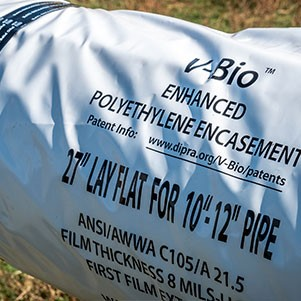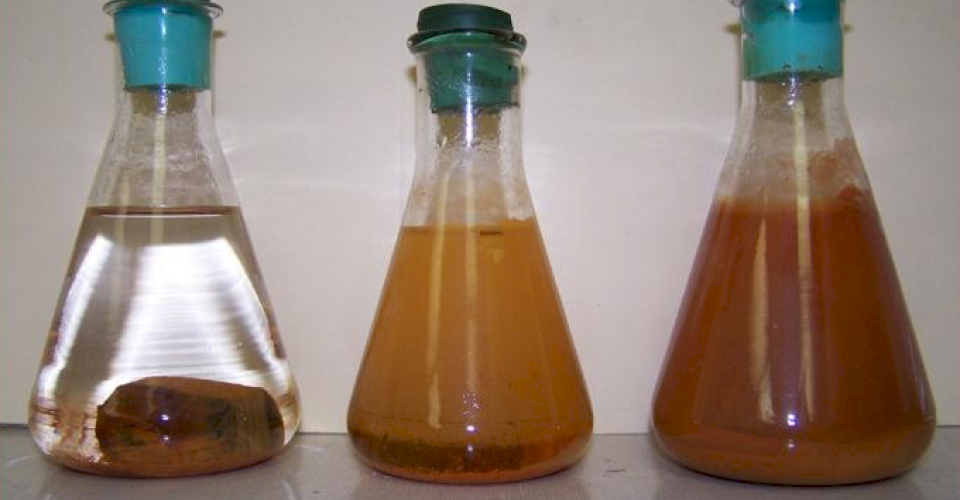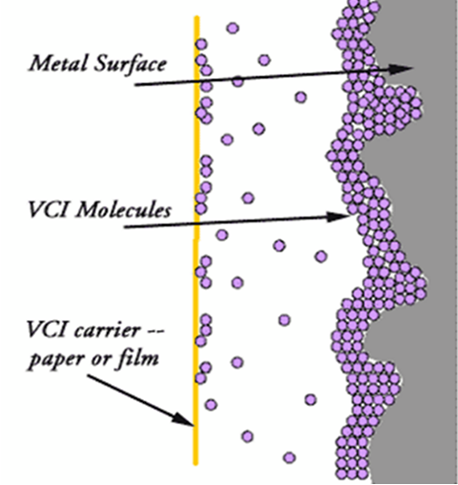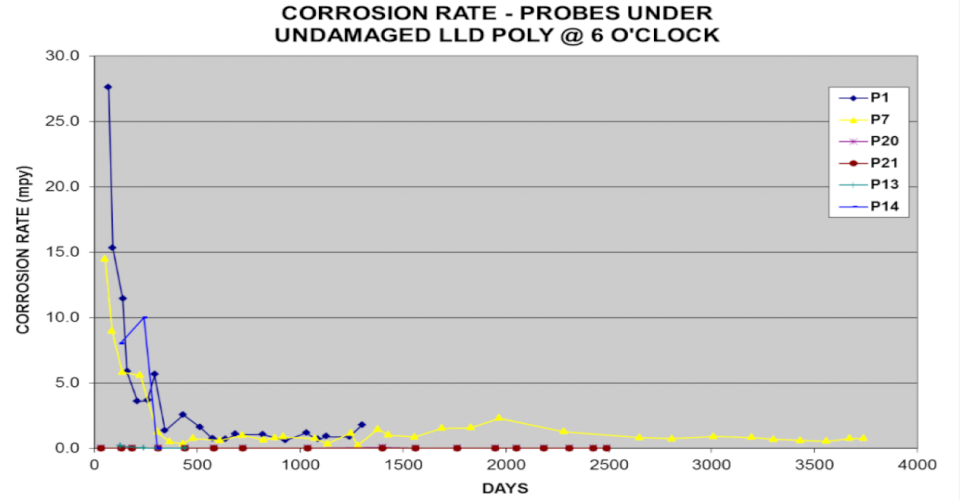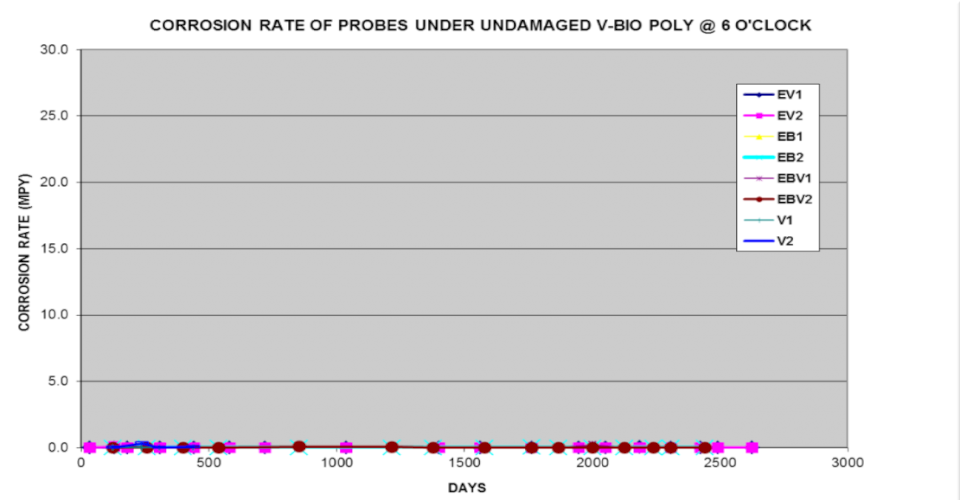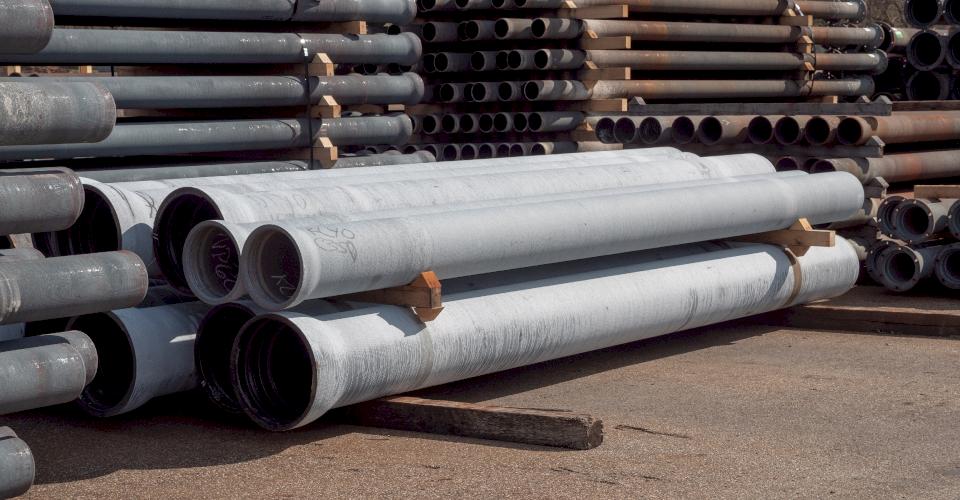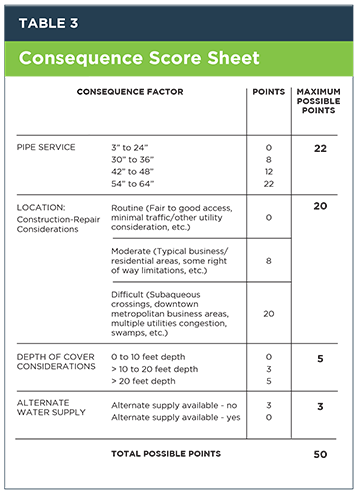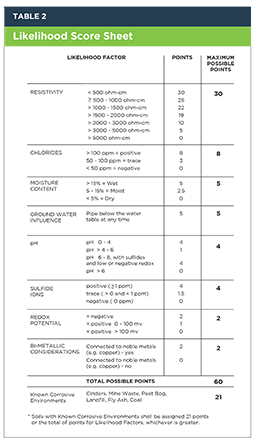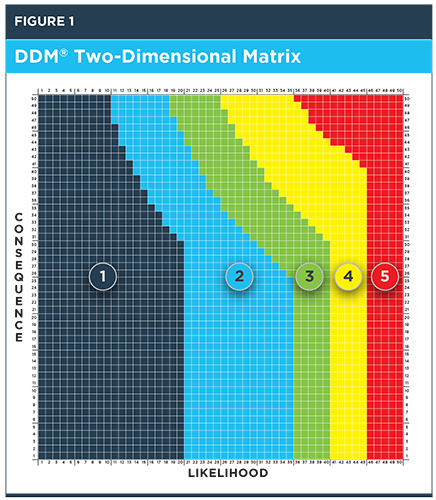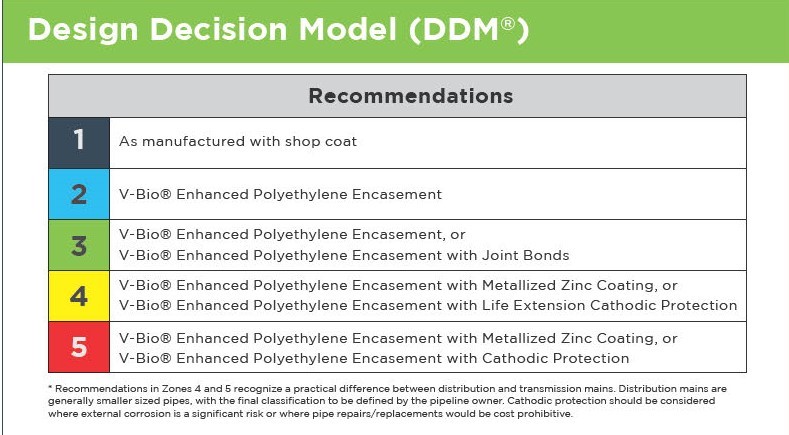Corrosion Protection Levels for DIP Made Easy
Ductile iron (DI) pipe is one of the most widely used pipe materials in North America. The Design Life is second to no other pipe material due to its robust design. This pipe material is the strongest and most resilient available for water and wastewater utilities providing unparalleled Life-Cycle value.
In many areas, utilities need to consider how to protect these valuable pipelines from corrosive soils. The question is “How can we economically protect these pipelines to meet or exceed the 105-110 year average design life of DI pipe?”
Wouldn’t it be excellent to have objective guidelines to evaluate corrosion risk and recommend the appropriate corrosion protection? And also have practical guidelines that consider the likelihood and consequences of a pipeline failure including the most recent innovations that recognize the differences between transmission mains and distribution mains?
Brief History of the DDM®
To address this need, the Ductile Iron Pipe Research Association (DIPRA) and Corrpro Companies (Corrpro - an Aegion Company) developed a two-dimensional risk-based model for corrosion control of ductile iron pipelines in 2003 -- the Design Decision Model (DDM®).
DIPRA, its member-company technical representatives, and Corrpro utilized more than 75 years of pipeline research data and hands-on experience with water and wastewater utilities and other experts in the field.
Over the last 15 years, that combined knowledge and experience has continued. New corrosion protection options have become mainstream such as V-Bio® Enhanced Polyethylene Encasement and metallized zinc coating. These advancements resulted in the updated DDM® available today.
Before we look at the New DDM® matrix, it’s helpful to understand why the development of V-Bio® and the addition of a zinc coating option drove theses updates.
As we know, polyethylene encasement has been providing highly effective front-line corrosion protection for iron pipe since 1958. DIPRA has numerous ongoing studies and corrosion test sites around the U.S. documenting its continued effectiveness over decades. With the addition of V-Bio® enhanced polyethylene encasement in 2013, corrosion protection levels were increased in three significant ways.
Why V-Bio® Enhanced Polyethylene Encasement?
V-Bio® Enhanced Polyethylene Encasement is a co-extruded, linear low-density polyethylene (LLDPE) film that is infused with a corrosion inhibitor and an anti-microbial component to provide active corrosion control to the already-proven protection offered by traditional polyethylene encasement.
These active additions inhibit the development of corrosion cells and repel the depolarizing microbes that may influence the rate of corrosion in a negative way. Both protect against corrosion without being consumed or degrading. The film's enhanced properties will last!
V-Bio® polyethylene is a patented corrosion protection utilizing proven technologies designed to control microbiologically influenced corrosion (MIC) as well as to eliminate the generalized, temporary corrosion that traditional polyethylene encasement may experience in the first months after installation.
Showing the effectiveness of the VCI with three ductile iron samples in a 5 percent salt solution after five years – the flask on the right contains bare DI, the flask in the middle contains DI wrapped with traditional polyethylene encasement, and the flask on the left is DI wrapped in the V-Bio® polyethylene film infused with the antimicrobial and corrosion inhibitor.
The following diagram illustrates how the VCI works. The buildup of corrosion inhibiting molecules provides resistance against the initiation of a corrosion cell.
Loosely bonded Hydrogen Molecules on the metal surface control corrosion until they are dislodged by corrosion processes driven by dissolved oxygen molecules.
VCI molecules are attracted to the surface to produce a strong polarbond, hydrogen film, thereby regaining control of the corrosion processes.
Additional V-Bio® performance improvements versus traditional 8-mil polyethylene are documented in the ongoing NACE Corrosion Study Paper No. 2655 by Horton (FLA Everglades).
To read more about V-Bio® polyethylene film versus standard polyethylene tubing, check out our Iron Strong Blog by Jerry Regula, McWane Product Engineer.
Traditional LLD Polyethylene Encasement
V-Bio® Enhanced Polyethylene Encasement
As effective as traditional polyethylene encasement is, the graphic comparisons above illustrate the improved performance of V-Bio® polyethylene under the same severely corrosive conditions.
How Economical Is V-Bio® Enhanced Polyethylene Encasement?
V-Bio® polyethylene encasement is second to no other highly effective corrosion protection system, whether based on cost or effectiveness. Costs range from 1.5 percent to around 3 percent of project installation cost, depending upon pipe diameter.
DIPRA enforces strict manufacturing standards by limiting approved manufactures to those that have proven records of producing quality polyethylene films that meet the requirements of ANSI/AWWA C105/A21.5. The product can be purchased from distributors representing DIPRA member companies, such as McWane Ductile distributors.
What Additional Protection Does a Zinc Coating Provide?
Utilizing a zinc coating on iron pipes has been used in the water industry worldwide since the 1950’s. Although zinc coated ductile iron pipe may be new to North America, it was first introduced in the 1980’s by McWane Ductile’s Canada Pipe Division, then known as CANRON.
In the past few years, water and wastewater utilities in the United States have started using zinc-coated DIP in conjunction with polyethylene encasement, including V-Bio®-enhanced polyethylene, to address more severe corrosion sites. Or, to provide an added level of protection from other utilities potentially damaging the V-Bio® in the future, or from improper installation/damage by contractors.
Historically, ISO zinc-coatings could be applied in concentrations as low as 130g/m. However, McWane Ductile uses a minimum standard of 200 g/m² of arc applied 99.99 percent pure zinc with a finishing layer of standard shop-applied bituminous paint in accordance with ANSI/AWWA C151/A21.51. Check out this Iron Strong Blog about the various bonded coatings McWane Ductile offers.
Although zinc coatings are never recommended as stand-alone protection in aggressive soils, the combination of properly installed V-Bio® enhanced polyethylene encasement and zinc provide an engineered system of corrosion control for ductile iron pipe that will ensure the expected service life that utilities have come to expect from their ductile iron pipelines, even in the most aggressive soils.
Bringing It All Together
Now that we’ve considered the driving reasons for the updates to the DDM® let’s look how the Two-Dimensional Matrix works for corrosion protection levels.
The DDM® Method of Corrosion Control for Ductile Iron Pipe
The Design Decision Model is a two-dimensional risk-based method of corrosion control that balances the likelihood of corrosion occurring against the consequences of a corrosion related problem. Most recently, it was improved in recognition of the practical realities of corrosion control in distribution systems and transmission systems. Most significantly, the details of its use have been published, allowing utilities and their consultants to use the system.
Consequence Axis
The vertical axis represents the Consequences of a failure with points assigned based on pertinent considerations related to the specific location of the pipe.
Points are assigned based on:
- Pipe Diameter
- Repair Considerations
- Depth of Cover
- Whether and alternate water supply is available.
As points accumulate, the consequences of a failure push the recommendations into higher protection levels.
Likelihood Factors
The Likelihood factors were updated to reflect the developments mentioned above, including the introduction of V-Bio® enhanced polyethylene, a metallized zinc coating option and 15 years of additional research and experience. The Likelihood factors take into consideration measured corrosive values for:
- Soil Resistivity
- Gound Water Table
- Redox
- Chlorides
- Sulfide Ions
- Bi-Metallic Corrosion
- Moisture Content of the Soil
- pH
- Known Corrosive Environments (includes Cinders, Mine Waste, Peat Bog, Landfill, Fly Ash and Coal)
**Important Note:
Soil measurements are often included in Geo Technical site evaluation reports. A utility may have site soil measurements on hand already.
Moving to The Final Phase: Recommendations
Once the consequences and likelihood values are totaled, the two values can be used to plot the intersecting point on the DDM® Graph. The color-coded recommendations table provides specific recommendations.
Example: an 8-inch pipeline installation site has been identified with low resistance soils at > 1,000 – 1,500 ohm-cm (22-point value), has a moisture content above 15 percent (5-point value) and sulfide ions above 1ppm (4-point value). The total point count is 31. The result would be in the blue zone (level 2) – which recommends using V-Bio® enhanced polyethylene encasement, in a low consequence area.
However, if the consequences were higher (assuming the same likelihood); such as a 30-inch Main (8-point value) in a downtown metropolitan business area (20-point value) and no alternate supply (3-point value) the Consequence total would be 31, which would move the recommendations up to the green zone (level 3). In this case, either V-Bio® or V-Bio® with joint bonds would be recommended.
Conclusion
It’s never been easier to meet sustainability low Life Cycle Cost and maximum Design Life goals using SMaRT™ Certified ductile iron pipe. Utilizing the 2018 Design Decision Model (DDM) helps achieve these goals utilizing highly effective low-cost solutions.
Need Assistance With Your Water Infrastructure Project?
McWane Ductile offers multiple services for our customers extending far beyond manufacturing ductile iron pipe. From design to installation, we take great pride in providing education and training to water professionals throughout the water and waste water industry. Together, we are Building Iron Strong Utilities for Generations!
Check out all our digital offerings:
References:
McWane Ductile Submittal Sheet (2015). “V-Bio Enhanced Polyethylene Encasement and Corrosion Control”
American Water Works Association (AWWA) (2015). “Buried No Longer: Confronting America’s Water Infrastructure Challenge.”
Institute for Sustainable Infrastructure, The ENVISION Rating System
Ductile Iron Pipe Research Association (DIPRA) (2018). “The Design Decision Model”
Horton, M., “Polyethylene Encasement Methodologies: A 10 Year Field Study on Ductile Iron Pipe in a Severely Corrosive Environment” (2013) Paper no. 2655, National Association of Corrosion Engineers, Houston, TX
Johnson, J., “How Ductile Iron Pipe Excels in the ENVISION Rating System” (Spring 2017), Journal NEWWA



